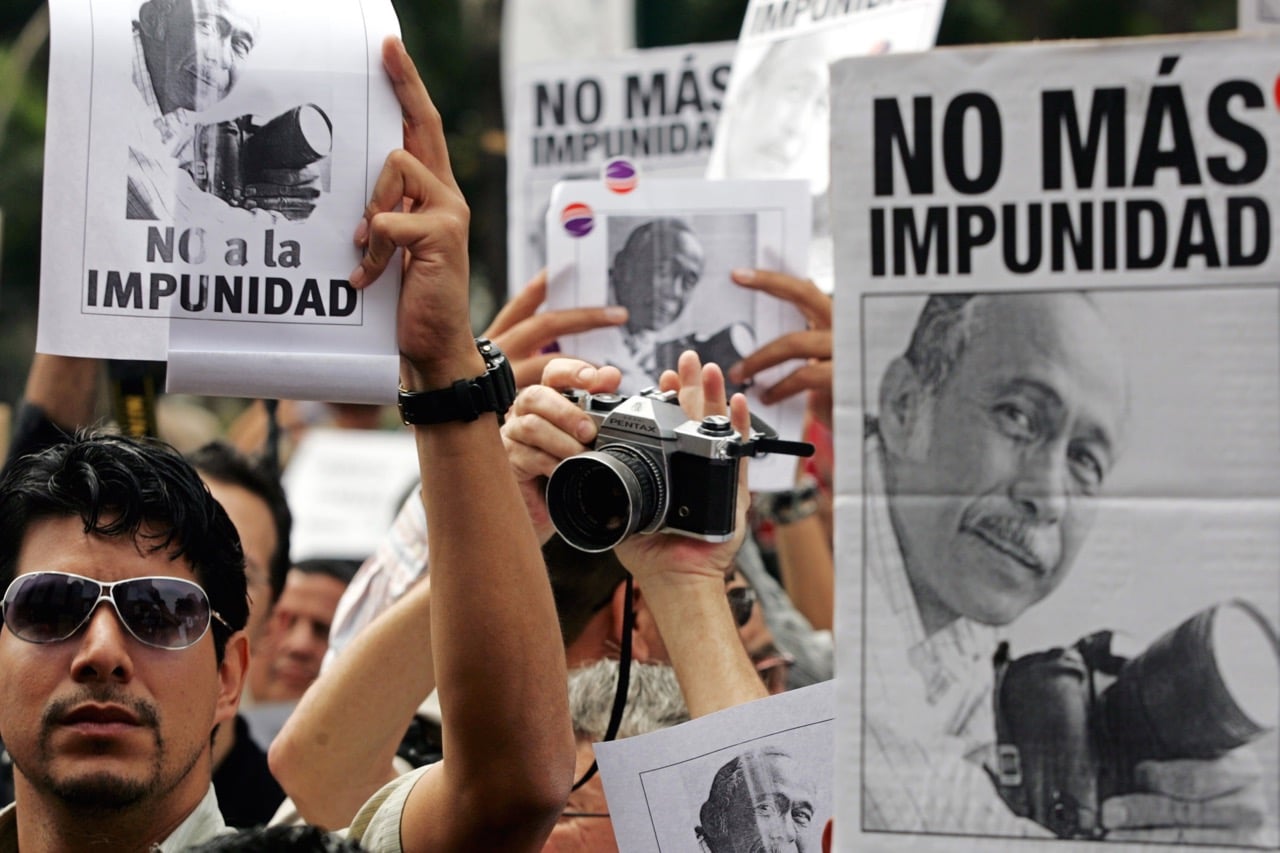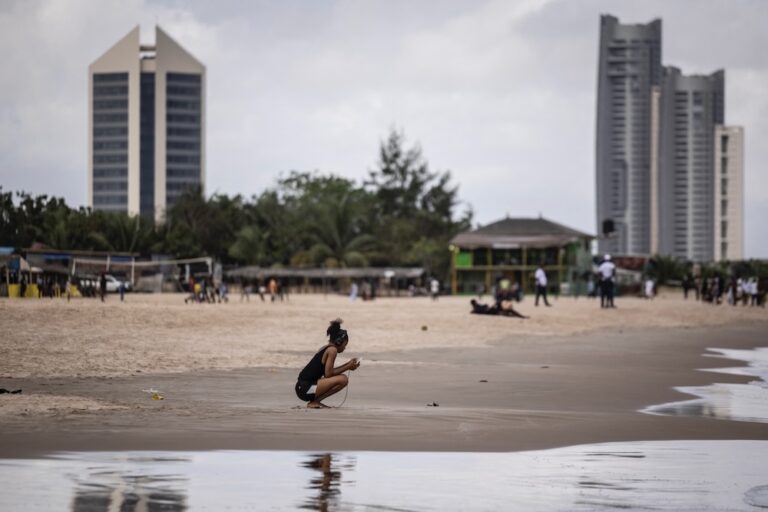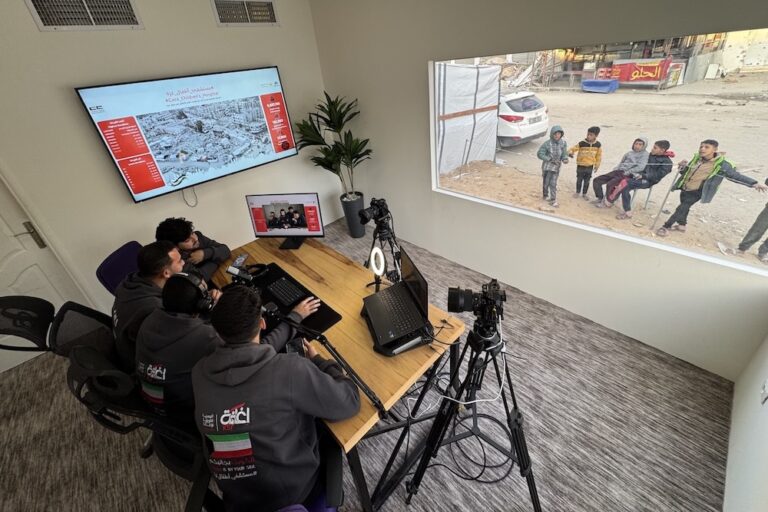A 5-minute IFEX guide to the Director General’s report, and how you can use it to demand accountability for crimes against journalists.
This is one in a series of IFEX explainers aimed at strengthening the ability of civil society to engage in global spaces for free expression advocacy. To visit the hub page and see the whole set, click here.More than 800 journalists have been killed in the past decade for doing their job: making information available to the communities they serve. In more than 90% of the cases, no one has been convicted. An important tool with the potential to change this reality is The Safety of Journalists and the Danger of Impunity: Report by the Director-General. This biennial UNESCO report can be used to encourage governments to promote a safer environment for journalists and combat impunity for crimes against them – and hold them accountable if they don’t keep their promises.
Here are 6 things to know about the Report.
1. What is it?
The report, released every two years in November, provides information and updates on cases of the killings of journalists condemned by the Director-General of UNESCO, the UN agency with the specific mandate of promoting the fundamental human right to freedom of expression. It was launched in 2008 by the Intergovernmental Council of the International Programme for the Development of Communication (IPDC). This body passes a regular biennial decision to reaffirm the report, but has requested some modifications over time which have expanded the scope of the IPDC’s monitoring and reporting mechanisms on the safety of journalists.
The report is available in English and French; an executive summary is available in Arabic, Chinese, Russian and Spanish. In some cases, there are translations into other languages.
Please note: updated information on the cases of the killing of journalists is published on alternate years by another UNESCO report: the World Trends Report in Freedom of Expression and Media Development.
2. What type of concrete information does it include?
- A list of killings of journalists condemned by the Director-General in the 24 months prior to its publication year
- Disaggregated data of the killing of journalists, by geographical region, type of media, by local and foreign reporters and by gender
- Comparisons of the numbers of journalists killed to previous years and analyses of trends since 2006 – the year the report was first published
- The status of judicial inquiries for the reported period, categorised as “no information received so far”, “ongoing/unresolved” or “resolved”
- Updates on investigations into killings committed since 1 January 2006, providing a timeline of individual inquiries
- Information provided by countries on actions they have taken to prevent impunity and improve the protection of journalists in their country
- Information on the implementation of the UN Plan of Action on the Safety of Journalists and the Issue of Impunity, as requested in UNESCO Executive Board Decision 196 EX/31
“An important step in addressing the high levels of journalists’ killings is combatting impunity, which perpetuates a cycle of violence against journalists. This is one of the key objectives of the UNESCO Director-General’s request for information from Member States on the status of judicial enquiries into the killings of journalists”2016 UNESCO Director General’s Report on the Safety of Journalists and the Danger of Impunity
3. Who is considered a “journalist”?
- The report includes the killings of “journalists, media workers and social media producers who are engaged in journalistic activity”
4. Where does the information come from and under what circumstances are journalist deaths included?
- Contributions by civil society groups are crucial. For a killing of a journalist to be included in the report, it has to have first been condemned by the Director General of UNESCO. For this to happen, the killing has to be reported by at least 2 independent, credible sources among the following: international and regional NGOs with consultative status at UNESCO, UNESCO field offices, UNESCO delegations and other UN bodies
- Inclusion of the killing of a journalist in the report does not necessarily mean that the killing was due to their journalistic work, although this is the reality in most of the cases. When a journalist is killed, the Director General of UNESCO calls for an investigation. If, as a result of a judicial inquiry, it were concluded that the killing of a journalist was not due to their journalistic work, the case is considered resolved. However, the case will continue to be listed in the report
- Governments with ongoing inquiries into the killings of journalists are requested to provide status updates annually. This is done on a voluntary basis. The Report lists the countries that have responded, including a summary of their replies, as well as those that have not provided a response
- Contributions provided by countries are made public only if they request UNESCO to do so; it is not mandatory. This information could be found by accessing each list of journalists killed by country on the UNESCO website; when there is information available on the judicial inquiry, a link entitled “Response by State” is made available.
5. How can civil society make use of the report to support the fight against impunity?
- Distribute it more widely. The more the report is made available, the more pressure is applied to reluctant governments lagging in their willingness to investigate and prosecute. Remember that this information is updated every other year in the UNESCO’s World Trends Report in Freedom of Expression and Media Development.
- Take advantage of the report’s intergovernmental nature to pressure governments that are reluctant to provide information and prosecute journalists’ killings; governments asked UNESCO to produce the report
- Research specific cases of impunity since 2006
- Use the data to strengthen your information and awareness-raising communications and advocacy activities, also when you provide inputs to other UN mechanisms, for example the Universal Periodic Review and the Human Rights Committee.
- Attend presentations of the report and contribute to discussions on the content. These take place every two years at the meeting of the Intergovernmental Council of the International Programme for the Development of Communication (IPDC)
- Make sure you are aware of the content of the biennial IPDC Decisions on the safety of journalists and the issue of impunity. This way, you know about any new commitments made in relation to the report and other journalists’ safety issues and so you can check on their implementation.
6. How could the report be strengthened?
- Government responses to the Director-General’s requests for information on judicial investigations should be timely, informative and comprehensive
- Improve data collection system on the killing of journalists to ensure the list is complete and accurate from 2006, the period covered by the report
- Create a template for State responses on the judicial inquiries, so information can be analysed and compared along the years
- When made public, responses by States on the judicial inquiries should be easily accessible on the UNESCO website
- Make countries’ responses public by default, provided doing so would not jeopardise the judicial process
- Require countries to provide more comprehensive information on major steps they have taken to promote safety and tackle impunity
- Have UNESCO integrate recommendations based on the information provided by countries as examples of good practices
- Consider including not only data on the killing of journalists but about other type of attacks against journalists, such as those defined in the indicator 16.10.1 of the Sustainable Development Goal (SDG) 16.10: kidnapping, enforced disappearance, arbitrary detention and torture
- Assess ways to reinforce the gender approach to the issue of the safety of journalists and impunity
- Follow-up on the development of the IPDC decisions on the safety of journalists and the issue of impunity, and advocate for specific language to strengthen the IPDC reporting and monitoring mechanism.
More resources and information
- UNESCO Safety of Journalists
- UNESCO’s Director-General Report
- UNESCO Condemns Killing of Journalists
- International Programme for the Development of Communication (IPDC)
- 2016 IPDC Decision on the safety of journalists and the issue of impunity
- Brochure: Strengthening the contribution of media for a future of sustainable development
- Brochure: IPDC’s monitoring and reporting mechanism on the safety of journalists and the issue of impunity brochure



